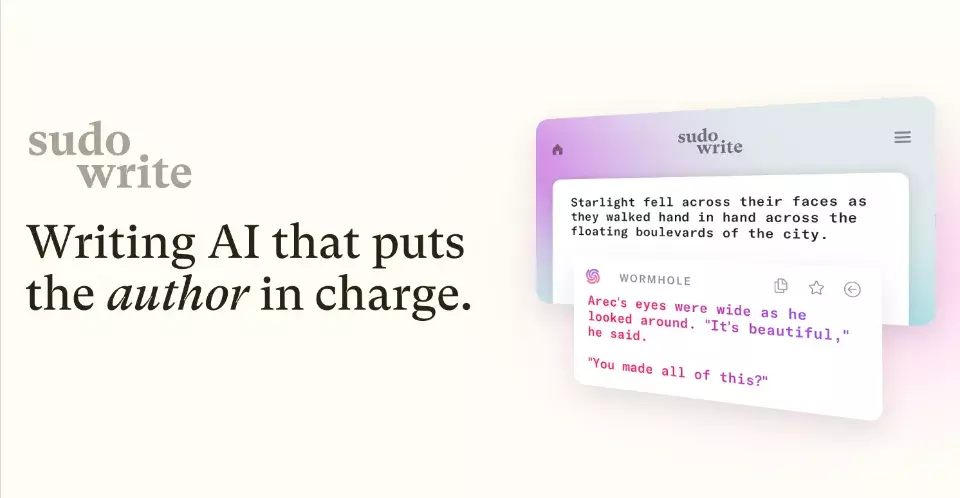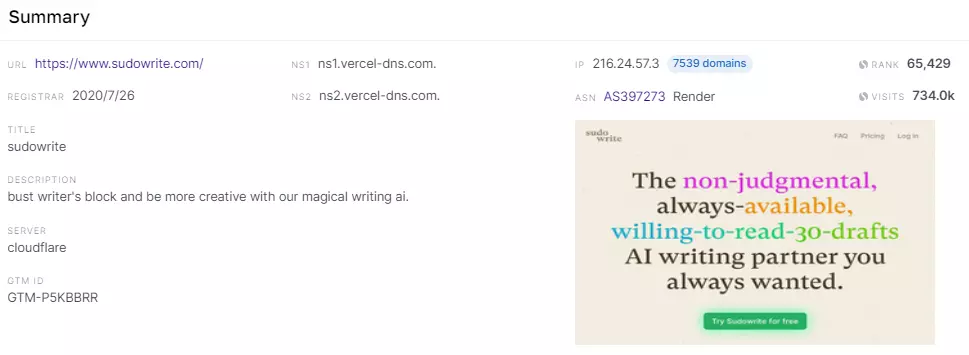
In the landscape of AI writing tools, Sudowrite and ChatGPT have emerged as influential players, each offering a unique set of features designed to enhance the writing experience.
The main difference between Sudowrite vs ChatGPT lies in their respective design and intended writing purposes.
In this post, we will delve into a thorough comparison of Sudowrite and ChatGPT, exploring their strengths, weaknesses, and the specific scenarios in which they excel.
What is Sudowrite?

Sudowrite is an AI-powered novel writing assistant designed to inject an element of fun and interactivity into the creative writing process.
Boasting an array of remarkable features, it goes beyond traditional writing tools by aiding in brainstorming ideas for characters and plot points, offering the ability to rewrite sections of your story in different tones, and providing excellent vocabulary suggestions.
One of Sudowrite's standout features is its role as a beta reader for your stories. Acting as a constructive companion, it offers valuable feedback and introduces fresh ideas to enhance the overall quality of your narrative.
What sets Sudowrite apart from other AI writing tools is its pronounced focus on fiction writing. While it excels in crafting compelling narratives, it is versatile enough to be employed for non-fiction writing as well. This adaptability makes Sudowrite a dynamic and engaging tool for writers across various genres.
Based on its creative features, Sudowrite can gain around 734k visitors each month now. (Data from Niche Finder's Website Audit)

What is ChatGPT?
ChatGPT represents an AI chatbot leveraging natural language processing to generate human-like conversational dialogue.
This language model is proficient in responding to inquiries and crafting diverse written content, spanning articles, social media posts, essays, code, and emails.
Functioning as a form of generative AI, ChatGPT allows users to input prompts, receiving outputs in the form of human-like images, text, or videos, all dynamically generated by the artificial intelligence system.
Sudowrite Vs ChatGPT: What are the Main Differences?
So what are the differences between Sudowrite and ChatGPT?
1. Contextual Understanding
Sudowrite: Provides valuable suggestions for plot development, character complexity, and narrative planning but may lack the contextual depth of conversation.
ChatGPT: Thrives in understanding context, generating coherent and contextually relevant responses, making it ideal for interactive and conversational writing scenarios.
2. Writing Proficiency
Sudowrite: Excels in refining grammar, style, and overall writing proficiency, making it an ideal companion for a wide range of writing tasks.
ChatGPT: Primarily designed for conversational interactions, offering natural language processing capabilities rather than deep writing analysis.
3. Use Cases
Sudowrite: Suited for authors, students, and professionals looking to enhance the quality of written content, including academic writing, fiction, and non-fiction.
ChatGPT: Ideal for developers seeking to create conversational agents, chatbots, or interactive dialogue systems. Also applicable in scenarios requiring dynamic and context-aware responses.
4. User Interaction
Sudowrite: Interacts with users by providing writing suggestions and enhancements, with a focus on improving written content.
ChatGPT: Engages in two-way conversations, simulating natural language interactions and responding dynamically to user inputs.
5. Use Cases
Sudowrite: Beneficial for students and researchers seeking to improve the grammar and style of their academic papers. It is also a valuable tool for authors crafting fiction stories, providing suggestions for plot development and character intricacies.
ChatGPT: Ideal for developers creating conversational agents, chatbots, or virtual assistants that require natural and dynamic interactions. It is also applicable in scenarios where dynamic and context-aware responses are crucial, such as interactive story experiences.
Final Thoughts on Sudowrite Vs ChatGPT
In short, Sudowrite excels in refining written content, making it an excellent choice for authors, students, and professionals aiming to enhance their writing proficiency.
ChatGPT, with its conversational prowess, is the go-to tool for developers seeking to create interactive dialogue systems, chatbots, and virtual assistants.
Both Sudowrite and ChatGPT showcase the diverse applications of AI in the realm of writing tools. Authors, students, and developers alike can benefit from incorporating these tools into their workflows, each serving a distinct purpose in the multifaceted landscape of creative and interactive writing.

